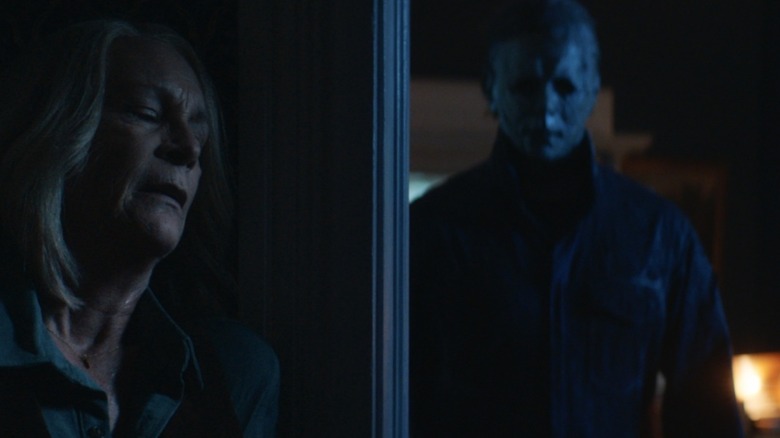
"Halloween Ends" might be the most divisive entry in the "Halloween" franchise. With 13 entries, it's unlikely that "Halloween Ends" is, well, the end of Michael Myers and the seminal franchise John Carpenter started over 40 years ago. Yet, as a capstone to this most recent trilogy, "Halloween Ends" packs more than enough Easter eggs and bits of fan service to satisfy diehard franchise fanatics.
David Gordon Green's trilogy is no stranger to callbacks and homages. His first entry, the better-received "Halloween," featured a final battle that radically reworked expectations set by Carpenter's original. The shifting roles of Michael Myers and Laurie Strode (Jamie Lee Curtis) and their vacillating power dynamics were thrilling. As a bonus, both "Halloween" and "Halloween Kills" feature plenty of Silver Shamrock masks, key iconographic bits from the Myers-free "Halloween 3: Season of the Witch." How Michael Myers returns next is anyone's guess, though "Halloween Ends" is almost certainly the last time fans will see Jamie Lee Curtis as Laurie Strode. Here, we review the 11 best easter eggs for the (as of now) final entry in the storied franchise.
Blue Title Font
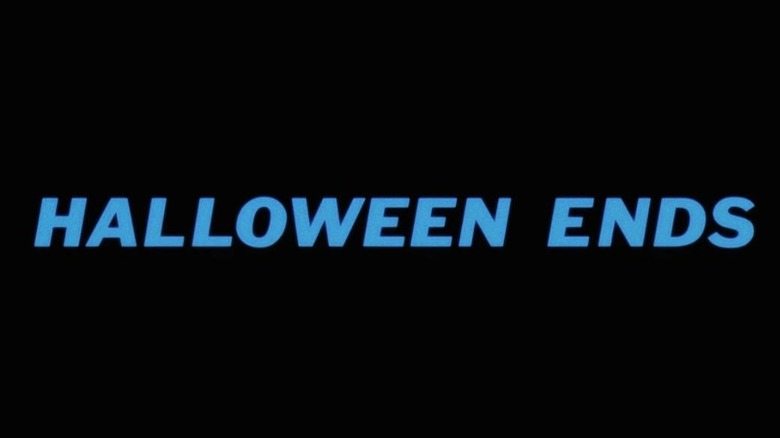
David Gordon Green had no qualms about identifying how divergent "Halloween Ends" was going to be from the two entries that preceded it. While it does seem more like preemptive damage control than anything else, "Halloween Ends" is both tonally and narratively distinct from the classic slasher formula of the first two entries. Michael is relegated to supporting player, and for the first hour or so, "Halloween Ends" seems more akin to something like "Twin Peaks" with a dash of Lifetime drama than a bonafide slasher movie bearing the "Halloween" moniker.
Green's intentions are clear from the start, though. While both "Halloween" and "Halloween Kills" featured familiar orange title fonts, "Halloween Ends" shifts to blue text, a clear homage to Tommy Lee Wallace's "Halloween III: Season of the Witch." Thematically, the shift makes sense, given how both "Ends" and "Season of the Witch" endeavor to take the franchise beyond the constraints of Michael Myers. While "Season of the Witch" accomplishes that more successfully, it's an early marker that "Halloween Ends" intends to both be about and not about perennial boogeyman Michael Myers.
Laurie's Theme
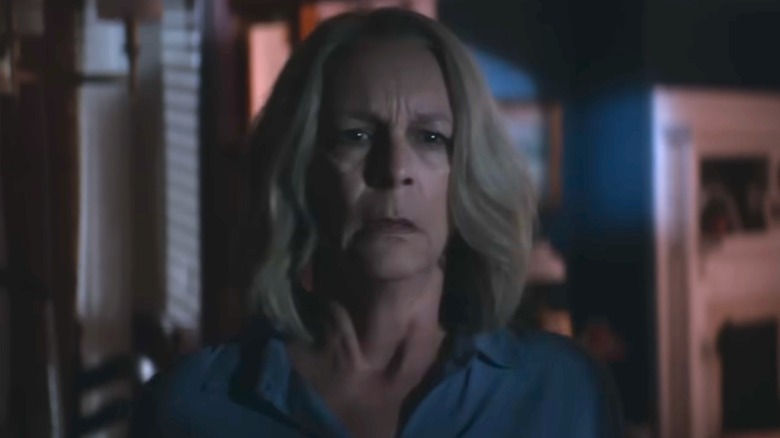
John Carpenter's directorial output is pretty much matched by his exceptional work as a composer. While the "Halloween" theme is one of the most enduring horror scores of all time, his work on the original is abounding with fan favorites, elegiac beats of autumnal terror and tragedy. One of the best is "Laurie's Theme," titled, of course, after final girl Laurie Strode. While franchise fans recognize the theme well, it was curiously absent (save for a weird remix) from David Gordon Green's trilogy.
That is until "Laurie's Theme Ends" featured in "Halloween Ends." Given how "Halloween Ends" similarly marks the conclusion of Curtis' role as Laurie Strode, it's fitting. Appearing during an opening montage recapping the previous films (those not retconned, of course), it's a wonderful way to pay tribute to one of the franchise's most enduring characters. Yes, "Halloween" is about Michael Myers, but it's just as much about Laurie Strode and the woman who cemented her legacy as a classic final girl.
It's Not Michael Under The Mask
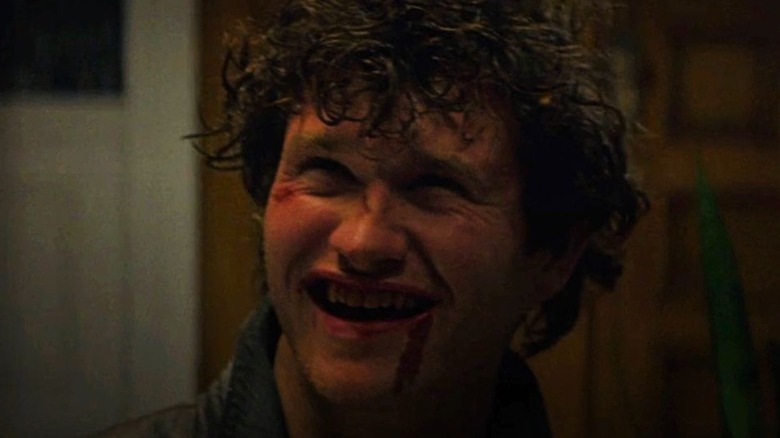
Franchise fans know well enough just how seriously "Halloween: Resurrection" tarnished what might be the series' best ending yet. Jamie Lee Curtis has even remarked that the old ending was so unsatisfying that it motivated her to return for David Gordon Green's new trilogy. For the uninitiated, "Halloween H20" was 2018's "Halloween" long before 2018's "Halloween." Laurie Strode is back 20 years later, struggling with alcoholism and repressed trauma (sound familiar?). As headmistress of a California boarding school, she's changed her identity, though she struggles to leave the past behind.
For his part, Michael does in fact return, and in the end, Laurie beheads him. It's as perfect an ending as any for a saga 20 years in the making. Or it would have been had it been Michael under the mask. "Halloween: Resurrection" retcons the ending, revealing that Michael swapped places with a paramedic and slipped away into the dark, leaving the poor sap to be decapitated in his place. It's terrible, cheap, and an awful ploy to keep the franchise going. A conspicuous rejoinder to the" Resurrection" retcon, "Halloween Ends" knowingly subverts expectations. As Corey (Rohan Campbell) invades Laurie's home, she shoots him down the stairs. This time, she knows it isn't Michael under the mask, and she has no qualms about taking him out.
Nurse Pinned To The Wall
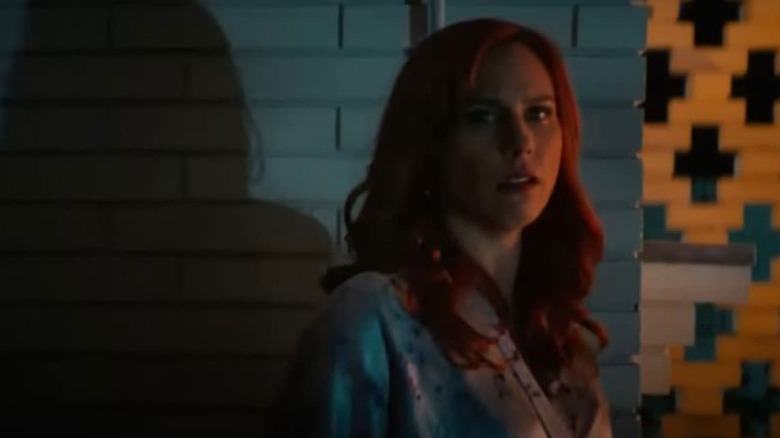
Michele Dawson's Deb is one of the most frustrating characters in "Halloween Ends," though not simply because of who she is. "Halloween Ends" wants to cement her as a foil to Andi Matichak's Allyson, though Deb is irritating at best. Everything Allyson blames Deb for is better placed at Dr. Mathis' (Michael O'Leary) feet. Given Deb and the doctor's affair, though, it's all but certain that they're going to be Michael's sacrificial lambs at some point.
While absconding for a night of Halloween treats and affairs, Michael and Corey arrive, killing the doctor off-screen. As Corey is locked out, Deb tries to call the police, though Michael appears behind her, swiftly shoving her into the wall and pinning her up with a knife through the chest. Franchise fans will spot how this death is borrowed verbatim from the original, with Lynda's (P.J. Soles) boyfriend Bob (John Michael Graham) killed in much the same way. Love or hate the new trilogy, there's no denying that David Gordon Green is a fan, and small beats like this manage to successfully pay homage without becoming too overt or distracting.
Cult Of Thorn Connections
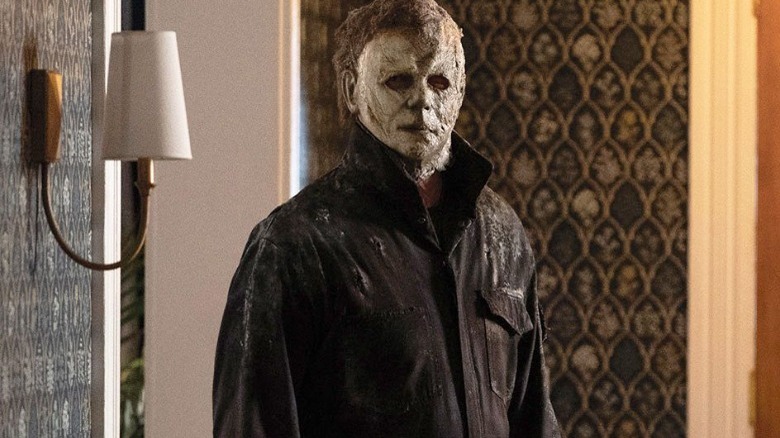
The new "Halloween" trilogy has struggled with its retcon considerably. On paper, the idea isn't bad. It's likely the only way a new trilogy could work 40 years after the original film. Since the "Halloween" franchise has several distinct timelines and more retcons than Michael has kills, the easiest way to start a new trilogy was simply ignoring everything but the first. Yet, David Gordon Green's "Halloween" doesn't really want to. "Halloween Kills" inexplicably borrows footage from "Halloween II" during its flashback scenes, and both it and "Halloween Ends" have more in common with the second timeline — the Cult of Thorn — than they might think.
The Cult of Thorn, explored in the fourth, fifth, and sixth "Halloween" films, amounts to a cult of Druids who have marked Michael Myers for great power. In effect, it explains both Myers' apparent immortality and desire to kill his entire bloodline. It's dense, esoteric stuff, and it isn't entirely effective, stripping away the simplicity of the perennial boogeyman for Samhain constellation rituals, cryptic bloodlines, and heaps of sacrifice. As motivation for Myers' evil, though, it appears thematically in "Halloween Ends." As an explanation of Michael's power and the transference therein, "Halloween Ends" might well be a sequel to "Halloween 6: The Curse of Michael Myers."
Don't Fear The Reaper
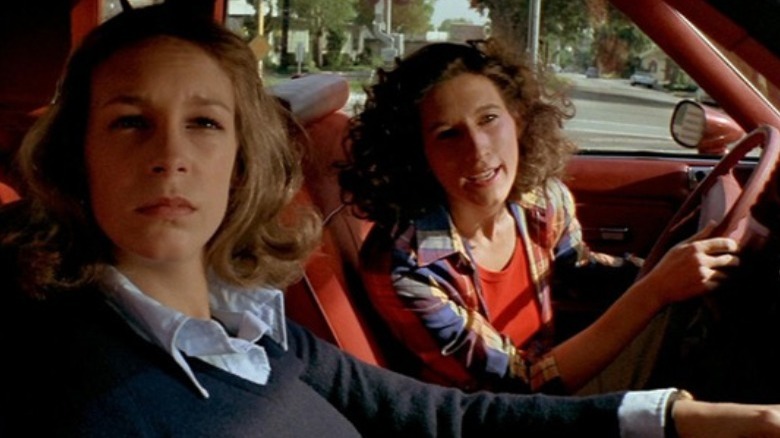
Early in Carpenter's original "Halloween," Laurie Strode and Annie Brackett (Nancy Kyes) are driving to their respective babysitting gigs — they're right down the street from each other. As they drive and discuss boys with the superb naturalism of Debra Hill's dialogue, Blue Öyster Cult's "(Don't Fear) the Reaper" plays on the car radio. It's a small moment, yet an enduring one. Wes Craven's "Scream" paid homage with a moody, slowed-down cover by musician Gus Black in its early moments, and to his credit, David Gordon Green concludes his trilogy by taking it back to the original.
Fans will be thrilled to hear the song over the credits of "Halloween Ends" It's a simple yet no less effective throwback, reminding fans of where the franchise has been, where it is, and where it might be headed. Strangely enough, (aside from the cowbell) the song is inextricable from the "Halloween" franchise, and it's a warm, nostalgic beat to hear it briefly play before the credits shift.
Man By The Sewer
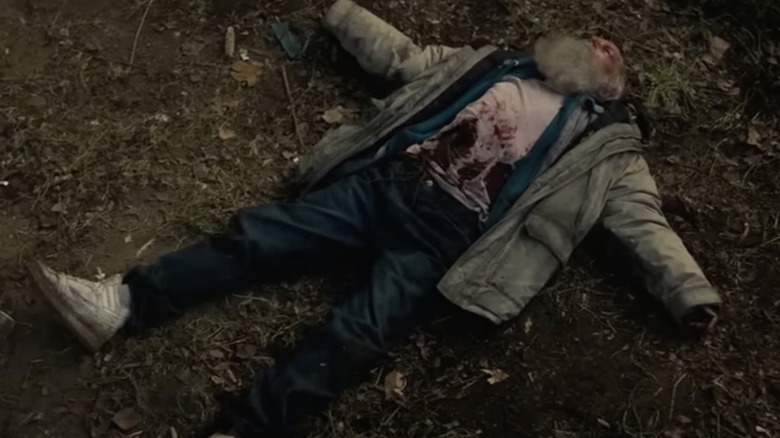
At the conclusion of "Halloween 4: The Return of Michael Myers," Michael is gunned down by a mob of Haddonfield residents (as noted, Green culls much from franchise history). Michael falls down a mine shaft. Roll credits. With the whole bit about Michael's evil transferring to his niece quickly retconned, "Halloween 5: The Revenge of Michael Myers" begins with Michael being taken in by a hermit living in the caves beneath Haddonfield. For a year, the man nurses Michael back to health, and on October 30, he awakens, kills the man, and returns to Haddonfield.
In what seems to be an homage, "Halloween Ends" features another homeless man hanging around the sewer system Michael has retreated to. Claiming to want Michael's mask and accosting Corey for not retrieving it, the two fight until Corey ends up killing him. Ostensibly an accidental death, it parallels the hermit's death in "Halloween 5." Better still, it's suggested that, as in "Halloween 5," this man has been keeping Michael alive as he bides his time.
The Thing
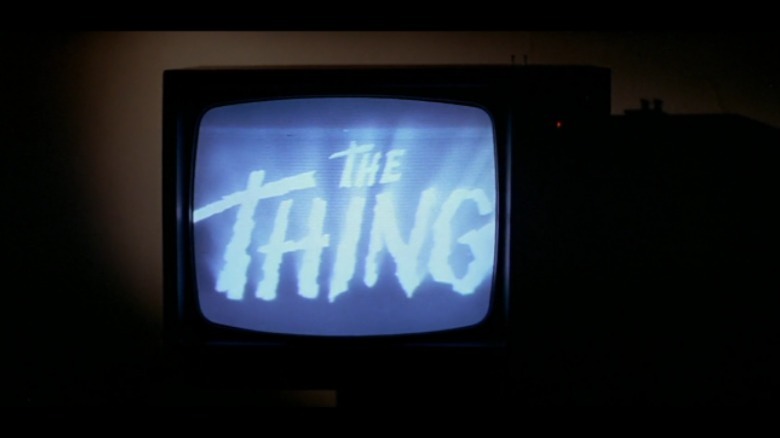
In John Carpenter's original "Halloween," Laurie Strode and charge, Tommy Doyle (Brian Andrews, one of three actors to play the role), watch Christian Nyby's "The Thing from Another World" on the television while carving pumpkins (unaware that Myers is across the street doing some carving of his own). It's long been a fun retroactive Easter egg for fans that, years later, Carpenter himself would direct a remake.
To pay homage to the legend himself, David Gordon Green opens "Halloween Ends" with Corey and his charge, Jeremy (Jaxon Goldberg), watching Carpenter's version of "The Thing" on the television. Like the original, it's a night of babysitting that goes horribly wrong, and it's a remarkably cute wink at the audience to see the babysitting shenanigans updated as a tribute to the man who started it all, even if Corey is right. "The Thing" might be a bit too graphic for a young kid.
Nick Castle At The Bar
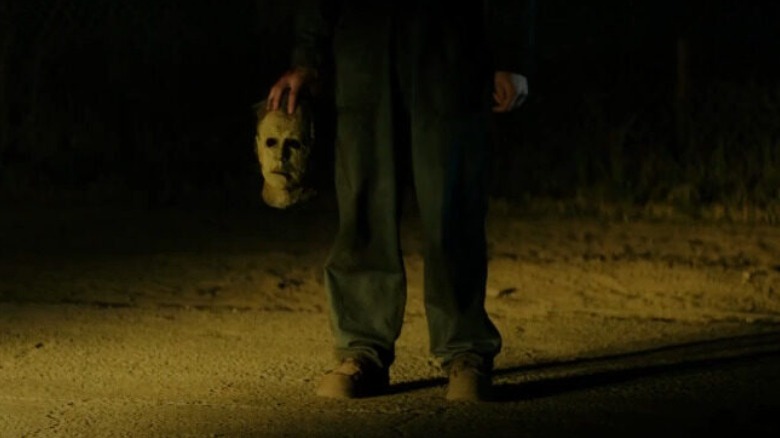
Nick Castle is a longtime collaborator of John Carpenter's. Aside from playing Michael Myers in the original "Halloween," he co-wrote "Escape from New York" with Carpenter. David Gordon Green and company have been reverent enough, casting Castle for brief bits of Myers mayhem in both "Halloween" and "Halloween Kills." Yet, for the first time in the new trilogy, Castle appears unmasked in a touching cameo that solidifies the franchise's storied history.
While Corey and Allyson are at a Halloween party, Corey bumps into a man in a trench coat. The man opens the coat, revealing a body covered in fake organs, asking Corey, "See anything you like?" The easter egg works on two levels. Not only is the line a classic culled from the original (Lynda drops her sheet to boyfriend Bob and asks the same thing), but the man in the costume is none other than Nick Castle, appearing unmasked for the first time. It's remarkably sweet, and it's wonderful to see Castle on-screen. He is, after all, the original boogeyman.
Tracking Laurie's House
The original "Halloween" has one of the most memorable horror movie endings ever. After Dr. Loomis (Donald Pleasence) unloads his revolver into Myers' chest, Michael stumbles over the balcony, falling onto the grass below. Loomis attends to Laurie and then returns, only to find Myers missing. The camera then pans throughout the house, with Michael's muffled breathing heard. The boogeyman is still out there, hiding somewhere in the dark.
As a capstone to the trilogy and the saga of Michael Myers and Laurie Strode, David Gordon Green wisely ends his film the same way. After a sweet exchange of words between Strode and Deputy Frank Hawkins (Will Patton), the camera cuts to the interior of Laurie's house. The audience sees the foyer, the kitchen, the dining room, and Laurie's office. This time, however, the scene is silent. Once and for all, the boogeyman has been defeated.
Corey By The Bushes
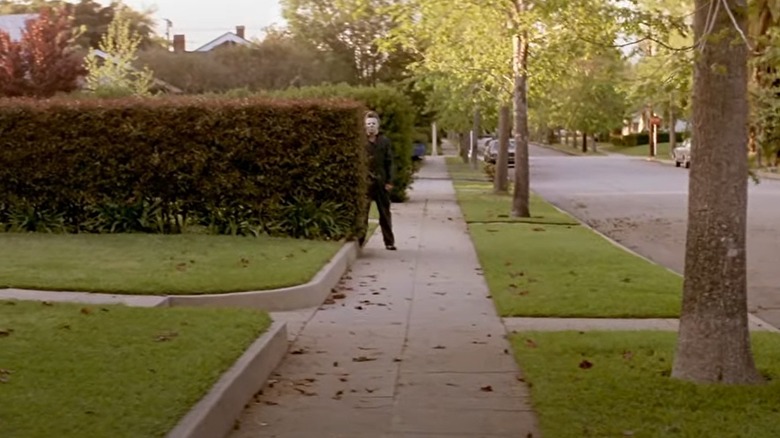
If Corey wanted to hide his quasi-soul transference with Michel Myers, he didn't do an especially good job of it. Beyond the eyes — Laurie maintains it's all in the eyes — he knowingly (or not) mimics a lot of Michael's behaviors. Most famously, he appears outside Laurie's house right after his first kill. Later remarking he was simply there to see Allyson, he gets off on the wrong foot by standing menacingly behind some bushes, echoing one of Laurie's first glimpses of the Shape in the original.
In "Halloween," Laurie catches Michael watching her from behind some hedges. Annie reasons it's likely Mr. Elrod (a character also referenced in Green's "Halloween"), and when she checks, no one is there. Similarly, Laurie walks outside, only to find Corey missing from where he once was. He surprises her with a requisite jump scare, and at that moment, Laurie is beyond certain something is up with Corey. The once cute kid with a cut on his hand is really working overtime in his tribute to the original Michael Myers.
Read this next: The Horror Movies We Can't Wait To See In 2022
The post The Best Easter Eggs We Found in Halloween Ends appeared first on /Film.
0 Comments